For centuries Ireland was a poor and backward country, left quite deliberately undeveloped as a purely agrarian nation by its English masters. After we achieved home rule and established the 'Free State', our resources were scarce and development of infrastructure and industry was an extremely slow process. (And this process is still ongoing.)
When Ireland joined the EU (then called EEC) in 1973, we were regarded as the least developed country in the union (of then nine members), and thus we qualified for enormous payments from the European Development Fund (EDF).
Over the years billions were flowing into Ireland, donated by our European partners, to help us with our domestic development. Without these financial donations the Republic of Ireland would most likely still be a country of small farmers and widespread poverty, with bad roads, donkey carts, appalling communication systems and massive emigration of the brightest and best who could not find suitable jobs in their own country. To put it bluntly: Ireland would still be very much like it is portrayed in John Ford's famous film 'The Quiet Man' (starring John Wayne in the title role).
But, as we all know, Ireland has changed a lot since this film was produced in Co. Mayo in 1952. In fact it has changed beyond recognition, even to a point that some people think we have gone too far down the road of modernisation. However, despite all the breath-taking development over more than three decades, there are still many things not right in Ireland.
Much of this has to do with factors we cannot change, such as our location, our geology, our size, and the size of our population (less than 4 million people, not counting recent immigrants from all over the world).
Apart from peat and some natural gas off the West coast (which our feckless, careless and totally incompetent government has given away as a present to Shell, with not a penny in return), we have almost no natural resources, ores or minerals.
We currently import 98% of our energy, and the prices charged for energy in the Republic of Ireland are now the highest in Europe.
The country is still dominated by agriculture, and our economy is totally dependent on exports. More than 80% of what we produce here - predominantly food and other agricultural products, and more recently also computers, software and technology - are exported, while we still import most of the consumer goods for our own needs.
For decades successive Irish governments (of various political parties) have spent vast sums of taxpayers' money to attract foreign investments - mostly from the USA - into the country, and thus we are now completely dependent on the grace and good will of the Americans.
In economical terms we are not an independent country at all (and probably never were), and despite our nominal sovereignty as a republic and our membership of the EU, we are de facto more the 51st state of the USA than anything else.
This is not a healthy condition, and if we have not noticed it that much in the past, we are certainly feeling it now, as Ireland is not only suffering from the fall-out of the big global financial crisis, but also from an even more serious domestic recession, which is a direct result of colossal mismanagement by our government, our banks and parts of our own economy (in particular the construction industry and so-called 'property developers').
If we do not find a solution for this massive crisis, which is by far the most serious challenge to Ireland's existence in economical as well as in political terms since the foundation of the state, we will find ourselves soon as a poor third-world country, controlled by the International Monetary Fund (IMF) and with no more say in our own affairs, domestic or otherwise.
Which ever party (or parties) would be in government then would be of little consequence, as the Taoiseach and his ministers would be reduced to the value of glove puppets. And the members of both Dáil and Seanad would be not more than over-paid and functionless bystanders.
If that is what we desire, then all we have to do is to sit back and watch how Fianna Fáil and the Green Party destroy the little that is left of our national wealth, economy and independence.
But, we don't have to go down that road of collective self-destruction, if we use our brains and skills, and have the courage to take a big step forward into the future.
We are fortunate to have still a large number of bright and well-educated people in Ireland, and also highly intelligent and skilled foreigners who live and work here.
Some of them, from different backgrounds, but all with plenty of ideas and experience, came together about six months ago and formed a private initiative. Quite fittingly they called their group Spirit of Ireland, and the plan they have developed since and presented to the Irish nation yesterday is brilliant, fascinating, breath-taking and - most importantly - absolutely realistic and feasible.
The team includes very experienced engineers, academics, architects, geologists, construction experts and consultants, as well as legal and finance professionals. They have worked intensively - and completely free of charge - on the initial design and costing of hydro-storage reservoirs, wind farms and the power networks necessary to connect them to the National Grid.
When Ireland joined the EU (then called EEC) in 1973, we were regarded as the least developed country in the union (of then nine members), and thus we qualified for enormous payments from the European Development Fund (EDF).
Over the years billions were flowing into Ireland, donated by our European partners, to help us with our domestic development. Without these financial donations the Republic of Ireland would most likely still be a country of small farmers and widespread poverty, with bad roads, donkey carts, appalling communication systems and massive emigration of the brightest and best who could not find suitable jobs in their own country. To put it bluntly: Ireland would still be very much like it is portrayed in John Ford's famous film 'The Quiet Man' (starring John Wayne in the title role).
But, as we all know, Ireland has changed a lot since this film was produced in Co. Mayo in 1952. In fact it has changed beyond recognition, even to a point that some people think we have gone too far down the road of modernisation. However, despite all the breath-taking development over more than three decades, there are still many things not right in Ireland.
Much of this has to do with factors we cannot change, such as our location, our geology, our size, and the size of our population (less than 4 million people, not counting recent immigrants from all over the world).
Apart from peat and some natural gas off the West coast (which our feckless, careless and totally incompetent government has given away as a present to Shell, with not a penny in return), we have almost no natural resources, ores or minerals.
We currently import 98% of our energy, and the prices charged for energy in the Republic of Ireland are now the highest in Europe.
The country is still dominated by agriculture, and our economy is totally dependent on exports. More than 80% of what we produce here - predominantly food and other agricultural products, and more recently also computers, software and technology - are exported, while we still import most of the consumer goods for our own needs.
For decades successive Irish governments (of various political parties) have spent vast sums of taxpayers' money to attract foreign investments - mostly from the USA - into the country, and thus we are now completely dependent on the grace and good will of the Americans.
In economical terms we are not an independent country at all (and probably never were), and despite our nominal sovereignty as a republic and our membership of the EU, we are de facto more the 51st state of the USA than anything else.
This is not a healthy condition, and if we have not noticed it that much in the past, we are certainly feeling it now, as Ireland is not only suffering from the fall-out of the big global financial crisis, but also from an even more serious domestic recession, which is a direct result of colossal mismanagement by our government, our banks and parts of our own economy (in particular the construction industry and so-called 'property developers').
If we do not find a solution for this massive crisis, which is by far the most serious challenge to Ireland's existence in economical as well as in political terms since the foundation of the state, we will find ourselves soon as a poor third-world country, controlled by the International Monetary Fund (IMF) and with no more say in our own affairs, domestic or otherwise.
Which ever party (or parties) would be in government then would be of little consequence, as the Taoiseach and his ministers would be reduced to the value of glove puppets. And the members of both Dáil and Seanad would be not more than over-paid and functionless bystanders.
If that is what we desire, then all we have to do is to sit back and watch how Fianna Fáil and the Green Party destroy the little that is left of our national wealth, economy and independence.
But, we don't have to go down that road of collective self-destruction, if we use our brains and skills, and have the courage to take a big step forward into the future.
We are fortunate to have still a large number of bright and well-educated people in Ireland, and also highly intelligent and skilled foreigners who live and work here.
Some of them, from different backgrounds, but all with plenty of ideas and experience, came together about six months ago and formed a private initiative. Quite fittingly they called their group Spirit of Ireland, and the plan they have developed since and presented to the Irish nation yesterday is brilliant, fascinating, breath-taking and - most importantly - absolutely realistic and feasible.
The team includes very experienced engineers, academics, architects, geologists, construction experts and consultants, as well as legal and finance professionals. They have worked intensively - and completely free of charge - on the initial design and costing of hydro-storage reservoirs, wind farms and the power networks necessary to connect them to the National Grid.
According to Spirit of Ireland the solution to our current economic crisis may lie in harnessing Ireland’s huge and constant wind energy potential. Or, to say it with the words of Bob Dylan, who gave one of his amazing live performances in Dublin on Tuesday: The Answer is blowing in the Wind.
The first phase of the suggested project promises energy independence for Ireland within five years, with a € 10 billion boost for our economy.
The second phase would see energy exports from Ireland to Europe, creating additional revenue in the range of € 3-5 billion per annum (in years six, seven and eight) and up to € 50 billion over the following ten years.
If you think this is just theory or science fiction, then wake up, realise that we live in the 21st century, and think again. All the details of this plan have been worked out thoroughly, and they have been tested and costed. This is not some pipe dream. This is reality, ready to happen, if the government and the people of Ireland want it.
The proposal is based on using natural coastal valleys to provide hydro-storage reservoirs. Wind farms would be built and used to pump sea water into these reservoirs, and the stored water can then be passed through turbines, generating massive amounts of electricity.
As well as producing excess energy for export, the project would also create many new jobs in Ireland and cut our carbon dioxide emissions significantly.
A similar model has been adopted successfully in Japan, and senior executives and engineers visiting from Japan confirmed the validity of this approach for Ireland.
To achieve energy independence and save € 15 billion in fossil fuel imports over five years, only two hydro-storage reservoirs (at a cost of € 800 million each) would be required. Wind farms - already existent ones as well as newly created installations - would then be connected to the reservoirs.
Speaking on the Today programme with Pat Kenny on RTÉ Radio 1 yesterday, the group's initiator Graham O’Donnell explained that the project could start "very soon", since "all the conditions are right". He also said that no new technology is needed and materials and machines required to make it happen are "available in Ireland, off the shelf".
And Mr. O’Donnell knows a few things about energy and how to create it. He is an electrical and electronics engineer with more than 20 years experience in the control and communications area of international power networks. During his career he worked on project management of water, gas and energy facilities in Ireland, Europe and Asia, before founding his own company, which specialised in control of power networks and high voltage substations, in 1988. It was responsible for the design of 400kv grid synchronisation equipment for National Grid UK, remote substation grid control for Scottish Power, and other large power utilities in the UK.
Graham O’Donnell also developed power network control systems in Dubai, Abu Dhabi, Qatar, Saudi Arabia and Bahrain.
 His principal partner in developing the new idea is Prof. Igor Shvets (left), one of Ireland's most eminent and innovative modern physicists. Originally from the Ukraine, Professor Shvets works at Trinity College in Dublin since 1990, teaching science and engineering students at both undergraduate and postgraduate levels.
His principal partner in developing the new idea is Prof. Igor Shvets (left), one of Ireland's most eminent and innovative modern physicists. Originally from the Ukraine, Professor Shvets works at Trinity College in Dublin since 1990, teaching science and engineering students at both undergraduate and postgraduate levels.
He leads the Energy Group within the School of Physics and has also established the Cleaner Energy Laboratory of Trinity College; he regularly publishes papers in the world’s leading journals for Applied Physics, and in addition, Igor Shvets is probably Ireland’s most prolific inventor with over 50 patents and patent applications to his name.
However, the key inspiration for the new energy project came to him not in a laboratory, but in his spare time. Professor Shvets likes to keep fit and does a lot of walking, especially hill walking, around the country.
And while out on his walks, he noticed that many of our hills and valleys - created during the last Ice Age - are "perfectly shaped", as he explained to Pat Kenny. This makes them most suitable for the creation of hydro-storage reservoirs.
Meanwhile Prof. Shvets and his team have identified "about 50 suitable locations in Ireland", mostly in the West, but to make it all work and economically successful only two are needed.
It was mentioned that, at a later stage, more hydro-storage reservoirs could be built to increase the production of energy for export, but that would be far down the lane.
Spirit of Ireland proposes to establish a public company in the form of a national energy co-operative, in which anyone (including very small investors) could buy shares.
This business model would give the people of Ireland real and direct ownership of the project and thus create a true national treasure.
As we all know, there is never a shortage of wind in Ireland, and we are surrounded by plenty of water. Using these natural resources to our benefit would create proper and continuous wealth, and it could be the key to achieve at long last our economic independence, to go hand in glove with our political sovereignty.
Over the past ten to fifteen years we were told of a mythical creature called the 'Celtic Tiger', which would make us all rich beyond imagination. No-one I know ever saw this 'tiger', and only a few people benefited from the hype people created around him.
We now know that it was all an artificial bubble, mostly based on over-inflated and unsustainable property deals, financed with immense sums of borrowed money. And as a result of this we find ourselves close to the edge of the abyss, just a few steps away from long-term poverty, hardship and damnation. On top of that we are also becoming ever more the laughing stock of the 'global village'.
The pot of gold that greedy 'property developers' and criminal bankers apparently found was only fool's gold, and the 'rainbow' they followed was not more than a strip of coloured paper.
We should learn our lessons from this, step away from gangsters and charlatans (and from the stupid and incompetent politicians who supported them and made their deeds possible) and turn to our oldest and closest friend and ally - Nature - to build the new Ireland.
The Spirit of Ireland group is showing us the way and is willing and able to lead us into a future with new hope, new jobs, 'green' and cheap sustainable energy, technological innovation and eventually economic independence. Only a nation of complete fools and clinically insane people would reject such an offer.
Let us therefore embrace the Spirit of Ireland, as our ancestors have done it many times over the centuries. But this time let us make it last, let us produce clean energy and let it flow all over Europe, day and night, as steady as the wind blows over our green and beautiful island.
The first phase of the suggested project promises energy independence for Ireland within five years, with a € 10 billion boost for our economy.
The second phase would see energy exports from Ireland to Europe, creating additional revenue in the range of € 3-5 billion per annum (in years six, seven and eight) and up to € 50 billion over the following ten years.
If you think this is just theory or science fiction, then wake up, realise that we live in the 21st century, and think again. All the details of this plan have been worked out thoroughly, and they have been tested and costed. This is not some pipe dream. This is reality, ready to happen, if the government and the people of Ireland want it.
The proposal is based on using natural coastal valleys to provide hydro-storage reservoirs. Wind farms would be built and used to pump sea water into these reservoirs, and the stored water can then be passed through turbines, generating massive amounts of electricity.
As well as producing excess energy for export, the project would also create many new jobs in Ireland and cut our carbon dioxide emissions significantly.
A similar model has been adopted successfully in Japan, and senior executives and engineers visiting from Japan confirmed the validity of this approach for Ireland.
To achieve energy independence and save € 15 billion in fossil fuel imports over five years, only two hydro-storage reservoirs (at a cost of € 800 million each) would be required. Wind farms - already existent ones as well as newly created installations - would then be connected to the reservoirs.
Speaking on the Today programme with Pat Kenny on RTÉ Radio 1 yesterday, the group's initiator Graham O’Donnell explained that the project could start "very soon", since "all the conditions are right". He also said that no new technology is needed and materials and machines required to make it happen are "available in Ireland, off the shelf".
And Mr. O’Donnell knows a few things about energy and how to create it. He is an electrical and electronics engineer with more than 20 years experience in the control and communications area of international power networks. During his career he worked on project management of water, gas and energy facilities in Ireland, Europe and Asia, before founding his own company, which specialised in control of power networks and high voltage substations, in 1988. It was responsible for the design of 400kv grid synchronisation equipment for National Grid UK, remote substation grid control for Scottish Power, and other large power utilities in the UK.
Graham O’Donnell also developed power network control systems in Dubai, Abu Dhabi, Qatar, Saudi Arabia and Bahrain.
 His principal partner in developing the new idea is Prof. Igor Shvets (left), one of Ireland's most eminent and innovative modern physicists. Originally from the Ukraine, Professor Shvets works at Trinity College in Dublin since 1990, teaching science and engineering students at both undergraduate and postgraduate levels.
His principal partner in developing the new idea is Prof. Igor Shvets (left), one of Ireland's most eminent and innovative modern physicists. Originally from the Ukraine, Professor Shvets works at Trinity College in Dublin since 1990, teaching science and engineering students at both undergraduate and postgraduate levels.He leads the Energy Group within the School of Physics and has also established the Cleaner Energy Laboratory of Trinity College; he regularly publishes papers in the world’s leading journals for Applied Physics, and in addition, Igor Shvets is probably Ireland’s most prolific inventor with over 50 patents and patent applications to his name.
However, the key inspiration for the new energy project came to him not in a laboratory, but in his spare time. Professor Shvets likes to keep fit and does a lot of walking, especially hill walking, around the country.
And while out on his walks, he noticed that many of our hills and valleys - created during the last Ice Age - are "perfectly shaped", as he explained to Pat Kenny. This makes them most suitable for the creation of hydro-storage reservoirs.
Meanwhile Prof. Shvets and his team have identified "about 50 suitable locations in Ireland", mostly in the West, but to make it all work and economically successful only two are needed.
It was mentioned that, at a later stage, more hydro-storage reservoirs could be built to increase the production of energy for export, but that would be far down the lane.
Spirit of Ireland proposes to establish a public company in the form of a national energy co-operative, in which anyone (including very small investors) could buy shares.
This business model would give the people of Ireland real and direct ownership of the project and thus create a true national treasure.
As we all know, there is never a shortage of wind in Ireland, and we are surrounded by plenty of water. Using these natural resources to our benefit would create proper and continuous wealth, and it could be the key to achieve at long last our economic independence, to go hand in glove with our political sovereignty.
Over the past ten to fifteen years we were told of a mythical creature called the 'Celtic Tiger', which would make us all rich beyond imagination. No-one I know ever saw this 'tiger', and only a few people benefited from the hype people created around him.
We now know that it was all an artificial bubble, mostly based on over-inflated and unsustainable property deals, financed with immense sums of borrowed money. And as a result of this we find ourselves close to the edge of the abyss, just a few steps away from long-term poverty, hardship and damnation. On top of that we are also becoming ever more the laughing stock of the 'global village'.
The pot of gold that greedy 'property developers' and criminal bankers apparently found was only fool's gold, and the 'rainbow' they followed was not more than a strip of coloured paper.
We should learn our lessons from this, step away from gangsters and charlatans (and from the stupid and incompetent politicians who supported them and made their deeds possible) and turn to our oldest and closest friend and ally - Nature - to build the new Ireland.
The Spirit of Ireland group is showing us the way and is willing and able to lead us into a future with new hope, new jobs, 'green' and cheap sustainable energy, technological innovation and eventually economic independence. Only a nation of complete fools and clinically insane people would reject such an offer.
Let us therefore embrace the Spirit of Ireland, as our ancestors have done it many times over the centuries. But this time let us make it last, let us produce clean energy and let it flow all over Europe, day and night, as steady as the wind blows over our green and beautiful island.
The Emerald Islander
P.S. - For more information about the group Spirit of Ireland and their proposals you should visit their interesting website at http://www.spiritofireland.org/





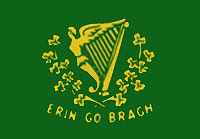





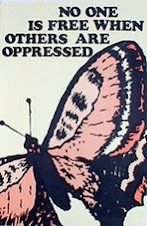






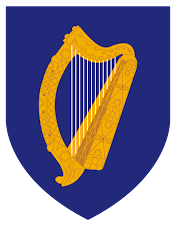

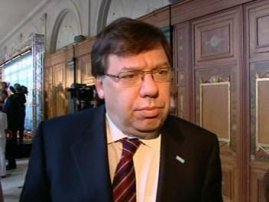




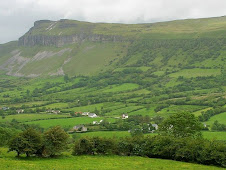
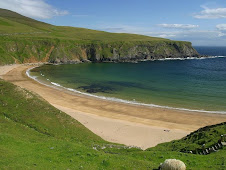













1 comment:
I don't know how many roads the man must walk down before you can call him a man. I am still waiting for that answer blowing in the wind since I was fifteen and I am almost fifty by now. But I really hope Ireland will take this chance. Not only because of wishing the Irish folks better times to come but also because of loving Mother Earth and The Irish Spirit.
Post a Comment